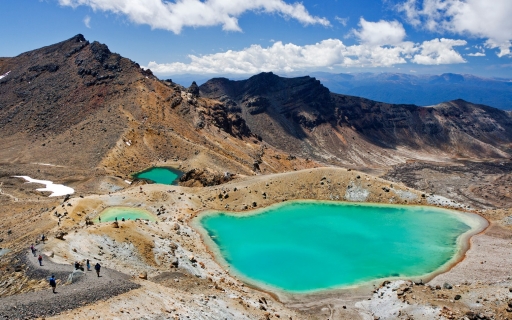Makarora Weather and Climate: A Comprehensive Guide
The temperature in Makarora can vary quite a bit throughout the year.
Temperatures can be mild during the warmest months,
and cold during the cooler months.
It is also known for its large amounts of rain/snowfall.
Now, let’s explore all the climate details to give you a full picture.
Average maximum day and minimum night temperature
Visitors to Makarora can expect significant temperature changes throughout the year. Typically, average maximum daytime temperatures range from a moderate 17°C in February to a chilly 4°C in the coolest month, July.
Nights are cooler, with lows often dropping to around -3°C during the colder months. Check out our detailed temperature page for more information.Temperature ranges by month
Precipitation and rainy days
Makarora is known for its substantial rain/snowfall, with annual precipitation reaching 2639 mm. Precipitation levels in Makarora remain relatively steady throughout the year. December has the most rain, with 264 mm over 14 days. In July, this drops slightly to 188 mm, making the city's climate fairly predictable.The mean monthly precipitation over the year, including rain, hail and snow
Sunshine over the year
For those who appreciate different seasons, Makarora serves as an ideal destination. Expect longer, more sun-filled days in January with an average of 7.7 hours of sunshine daily, and embrace the darker days in June, offering only 4.0 hours of daily sunlight. Visit our detailed sunshine hours page for more information.Monthly hours of sunshine
Daily hours of sunshine
broken clouds and chance of slight rain partly cloudy and no rain broken clouds and no rainForecast for Makarora
Select a Month of Interest
Check the conditions for any month of the year.
The best time of year to visit Makarora in New Zealand
The average rainfall figures in Makarora are quite high. Throughout the year, you have a chance of prolonged precipitation. So no matter what time of year you go, you will always have to deal with a high number of rainy days. This makes it more challenging to point out the best time of year to visit. If we needed to pick one month we would choose January which is the sunniest month of the year.Other facts from our historical weather data:
February has an average maximum temperature of 17°C and is the warmest month of the year.
The coldest month is July with an average maximum temperature of 4°C.
December tops the wettest month list with 264 mm of rainfall.
July is the driest month with 188 mm of precipitation.
January is the sunniest month with an average of 231 hours of sunshine.
No idea where to travel to this year? We have a tool that recommends destinations based on your ideal conditions. Find out where to go with our weather planner.




